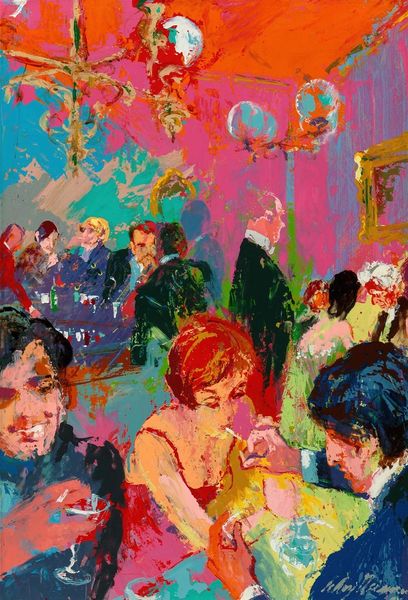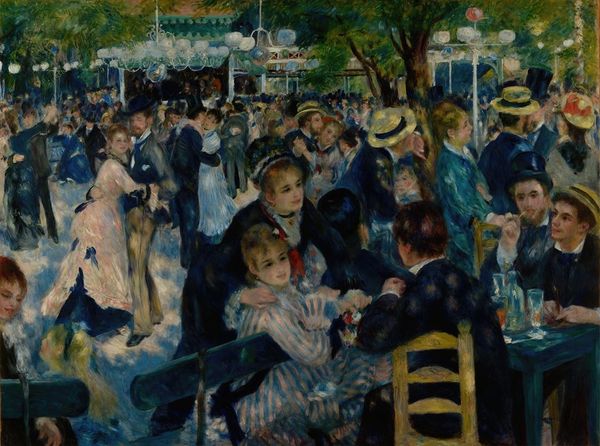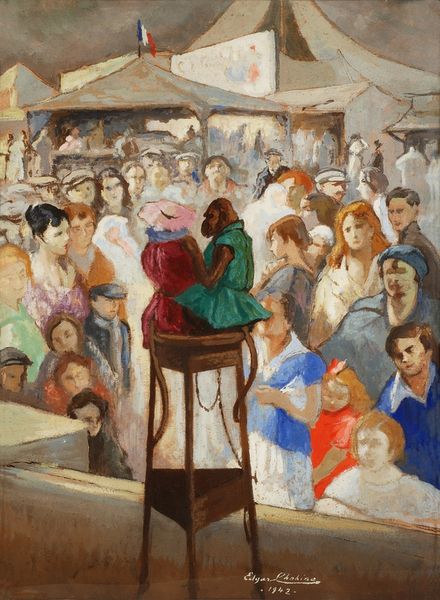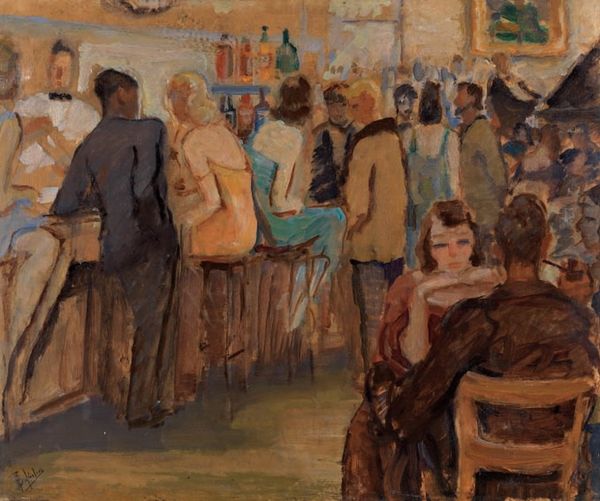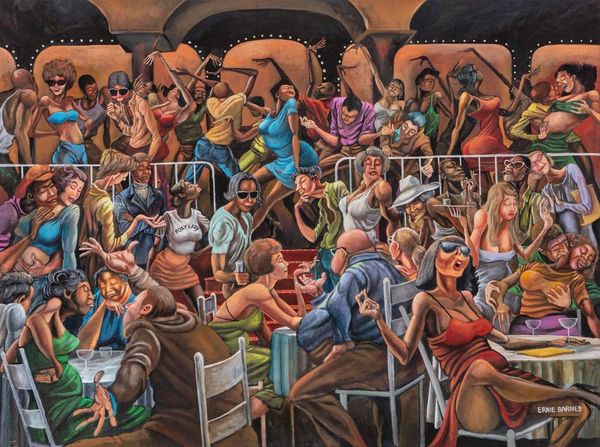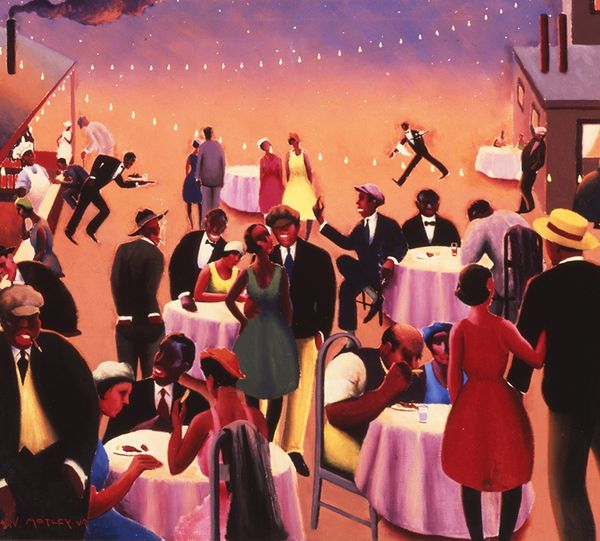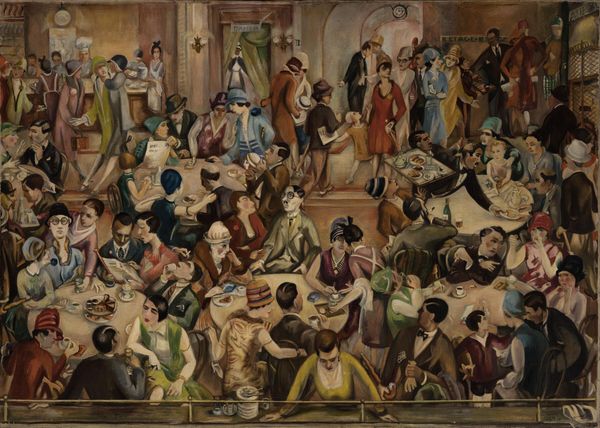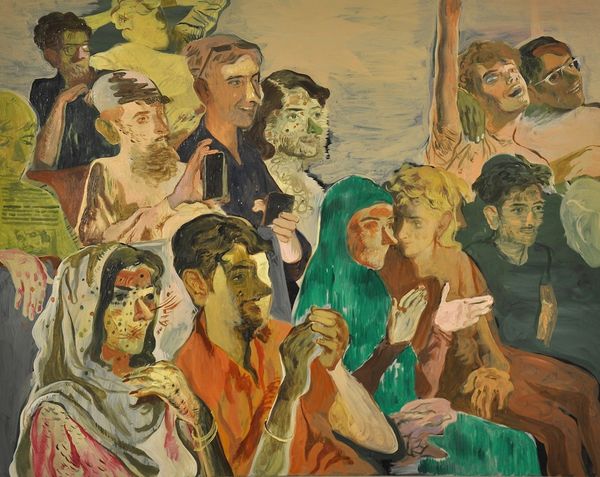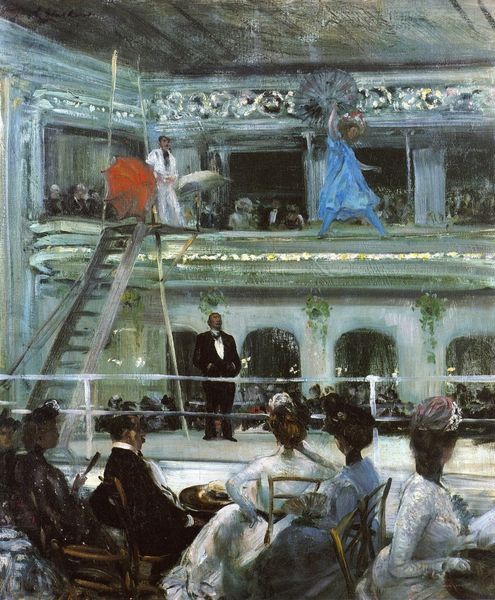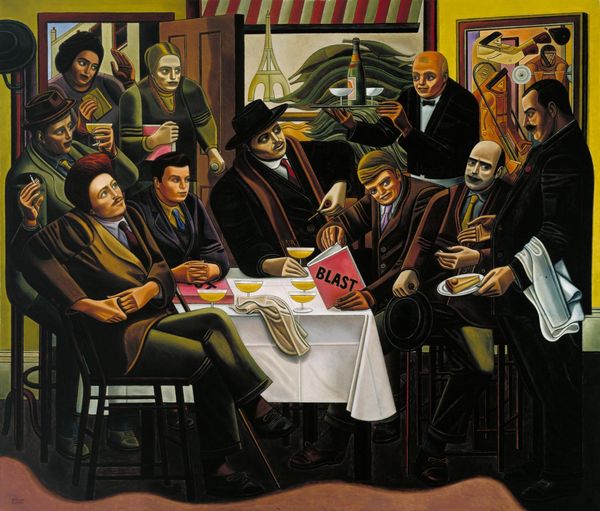
painting, oil-paint
#
painting
#
oil-paint
#
figuration
#
oil painting
#
group-portraits
#
genre-painting
#
modernism
Copyright: Dmitri Zhilinsky,Fair Use
Editor: This is Dmitri Zhilinsky’s 1989 painting, “Art Theatre Spring,” rendered in oil. There's a remarkable stillness in the gathering depicted; it almost feels like a photograph rather than a bustling scene. How do you interpret this work, considering its historical context? Curator: Seeing this, I immediately think of the societal shifts occurring in the Soviet Union during the late 1980s. While seemingly a genre painting, this "spring" likely represents a thawing – a cautious optimism before the collapse. Note the diverse representation; how might we consider the figures' relationships to power structures within the Soviet art world? Are there absences here as important as the presences? Editor: That’s fascinating. I hadn't considered the implications of who is represented, and, crucially, who *isn't*. The formal attire, for example—is it conformity or a statement of belonging? Curator: Exactly! And consider the role of the "Art Theatre" in Soviet society. It was a space both for cultural expression and political maneuvering. Zhilinsky, by portraying this scene, possibly engages in a complex dance of approval and quiet critique. The 'spring' isn't just seasonal; it hints at societal shifts, but does so with careful ambiguity to negotiate prevailing censorship and ideological constraints. What might those flowers signify within this specific framework? Editor: So, it’s less a straightforward celebration and more a nuanced commentary on a society in flux, using the language of art and theatre to convey meaning? Curator: Precisely! It reflects the subtle ways artists negotiated ideological constraints and hinted at burgeoning social changes, carefully embedded within seemingly innocuous genre scenes. The work embodies resistance and conformity, prompting a critical reading of artistic expressions under complex political climates. Editor: This really reframes how I see the painting. It’s not just a snapshot; it's a loaded historical document. Curator: Indeed. By viewing art through socio-political lenses, we amplify marginalized narratives and foster dialogue, thereby enriching our collective comprehension.
Comments
No comments
Be the first to comment and join the conversation on the ultimate creative platform.
